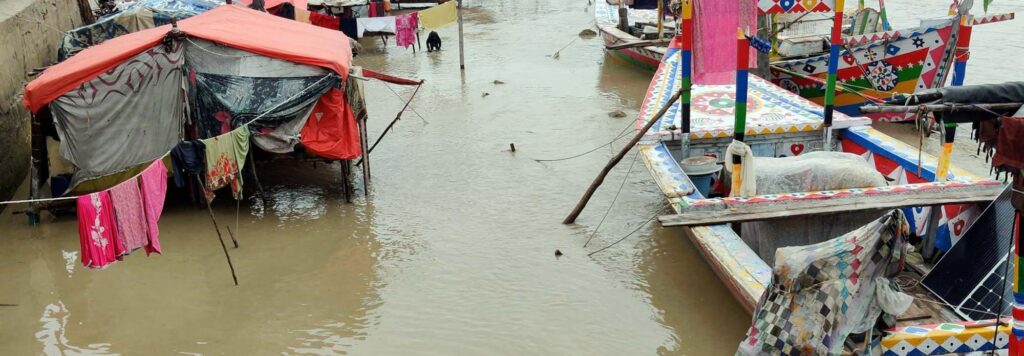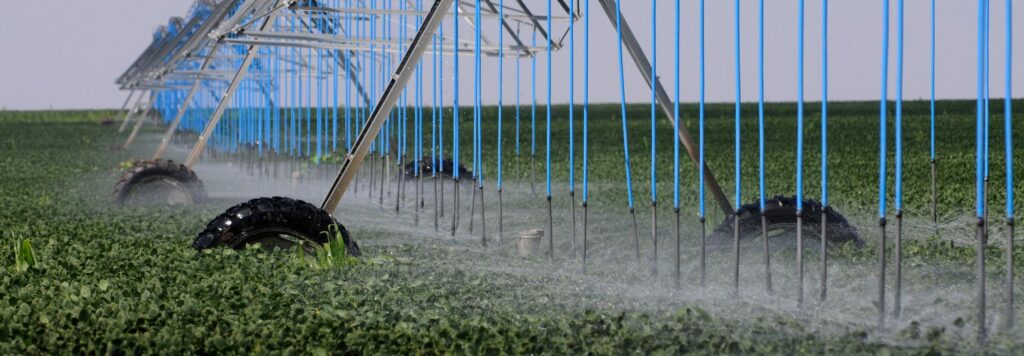In Brooklyn, one of New York City’s five boroughs, a new schoolyard features newly-planted native trees offering shade and bright playground equipment that sits adjacent to a track and turf field. Colorful murals celebrating the diversity of its Boreum Hill neighborhood surround the area. Seniors play chess while toddlers run past. It could easily be mistaken for a public park if it weren’t for the school signage on the building next door.
The Pacific School (P.S. 38K) is one of more than 220 New York City public schools to transform its asphalt playground into a vibrant community space over the past two decades thanks to Trust for Public Land’s (TPL’s) Green Community Schoolyards. The program aims to create safe, accessible green places for New Yorkers — particularly those in disadvantaged neighborhoods — to gather close to their homes and connect with nature.
“I grew up in New York City, and I played on an asphalt playground,” recalls Mary Alice Lee, director at TPL. “It was adjacent to a park, and I would stare through the chain-link fence thinking it’s not fair that we don’t get to enjoy the playground equipment, the trees, the shade.”

Lee has since dedicated her decades-long career to creating open spaces for New York City’s residents to enjoy the outdoors. “I think every child deserves a place to play in,” she says.
But TPL’s program offers much more than recreational and community-building opportunities. In an urban landscape otherwise dominated by concrete, green schoolyards are also critical climate-resilient spaces to help mitigate the increasingly extreme heat and flooding impacting New York City.
Green Community Schoolyards Address New York City’s Climate Needs
Nicknamed the “concrete jungle” in the mid-1900s, New York City’s dense urban landscapes of skyscrapers, concrete pavements and bustling streets are legendary. But with temperatures rising and the urban heat island effect exacerbating extreme heat in cities, New York faces a growing need for cool, shaded green spaces where all members of a neighborhood can spend recreational time, meet neighbors and form community connections.
New York City is home to only 2.2 public playgrounds per 10,000 residents, far below the average of 3.1 playgrounds in America’s 100 largest cities. The hundreds of green community schoolyards TPL has created seek to address that shortage. The program has succeeded in making playgrounds accessible to more than half of all New Yorkers, with 5 million residents now living within a 10-minute walk to a green space. TPL estimates that 220,000 children and community members have directly benefited from these new schoolyards.

“Overall, New York City is over 70% impervious,” explains Melissa Enoch, assistant commissioner of the New York City Bureau of Environmental Planning. “That means we’ve paved over a lot of our land. We’ve developed it. We’re preventing stormwater from soaking into the ground like it used to before development.”
Without enough soil and natural terrain to absorb water quicky, cities are at higher risk of flooding during extreme rain events. In 2012, for example, Hurricane Sandy devastated New York City with unprecedented flooding. In the span of 48 hours, the storm damaged 69,000 residential units, left hundreds of thousands without power and limited critical services like access to food, drinking water and healthcare for people across all five boroughs. As the city recovered and looked to make itself more resilient in the face of future extreme weather events, New York City’s Department of Environmental Protection joined TPL as a partner to ensure all future schoolyards would feature green infrastructure.
The sites now serve as a network of both physical and social infrastructure, alleviating climate-related flood risk and urban heat island effects, while providing 5 million New Yorkers access to green space.
Students and Neighbors Take Ownership of the Schoolyards
A unique and critical component of the Green Community Schoolyards initiative is that children are heavily involved in the design process. TPL introduced lessons on climate science and stormwater management into the school curriculum to educate students on the importance of water absorption, shade, native species and gardening, all critical components of a green schoolyard. Students then co-design their own schoolyards, facilitated by TPL and the landscape architecture firm, Studio HIP.

“We had a lot of puddles in the yard when we had rainstorms,” Pascale Pradel, principal of P.S. 38K The Pacific School in Brooklyn, says. “[When] our kids got to see the construction process of the yard, they understood the importance of getting the water off the streets — and they felt like they were making a difference in our school environment.”
Participating in the design process challenges schoolchildren to think about needs beyond their own, like playground equipment for younger students and creating shaded bench spaces for caregivers. “It’s a very heartwarming feeling,” reflects Alex, now an eighth-grade student. “I started this project when I was in sixth grade. But knowing that when I’m an adult there will still be kids who get to play around in this yard, it’s a really cool idea.”

To ensure that schoolyards accommodate the diverse needs of the surrounding community after school hours, the program also collaborates with local senior groups, sports clubs, cultural clubs and others. By actively engaging communities and schoolchildren in the design of their own green spaces through civic action and advocacy, the program creates a sense of ownership and fosters long-term stewardship.
Keeping the Momentum Going
Witnessing the impact that TPL’s Green Community Schoolyards have had on students and broader communities, and the important benefits the spaces offer for climate resilience, it’s no wonder that the City of New York continues to champion the project. Several municipal agencies provide support, and the city has even included the project in its green infrastructure and formal flood mitigation plans.
TPL has created a sustainable public-private partnership that will ensure the program continues. In this model, various public sources, such as the Mayor’s Office and the Department of Environmental Protection, provide capital funding, private donors cover programmatic costs, and TPL carries out project implementation together with communities. TPL also works with the New York City School Construction Authority to ensure projects are completed within the tenure of a student’s time at a school.

The project’s relative simplicity — transforming empty asphalt lots into vibrant, green community spaces — makes this kind of intervention highly replicable and scalable. To date, similar projects have been completed in 15 other U.S. cities, including Philadelphia, Tacoma, Wash. and Oakland, Calif., with differing urban forms and densities, governance structures and climates (including desert climates). TPL is working on a federal program to set aside $150 million per year for nationwide schoolyard renovations based on the organization’s model of green design, student engagement and community stewardship.
For Lee, there is no greater reward than seeing the parks bustling with activity. “I love being able to be part of this project. It’s so important to me that we’re creating these green spaces for New Yorkers … for people who might not have access to open space. They’re able to sit in the shade, they’re able to smell the flowers, and they’re able to have fun and relax. They’re also able to run around on the track or play soccer, and it’s really wonderful to give that gift to the people of New York City.”
The 2023-2024 WRI Ross Center Prize for Cities celebrates projects and initiatives building momentum for climate-ready communities. Green Community Schoolyards was among the finalists in the prize, receiving $25,000. A $250,000 grand prize was awarded to Re-Cilo, a recycling program in Fortaleza, Brazil.












